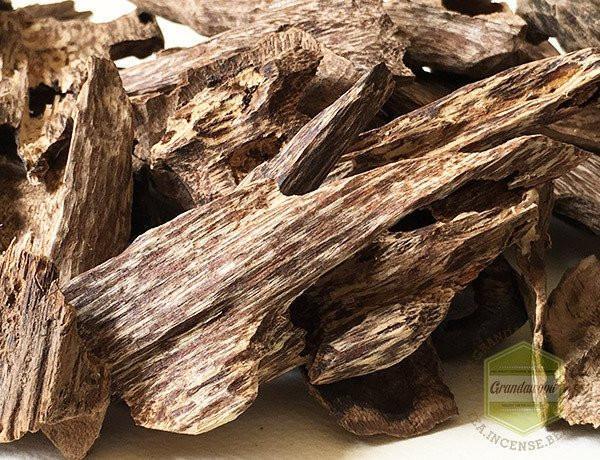Menu
-
-
F.A.Q
- How to identify genuine agarwood chip, natural or cultivated
- How to identify oil injection / absorption fake agarwood beads
- How to know if there are more than one oil in your oil
- How to make your wood bracelet or mala darker
- How to tell if an Agarwood bead sinks WITHOUT sinking it under water?
- How does back flow incense work and how do you burn it?
- Where to start if you don't know what agarwood is ?
- Why are you losing money if you buy seeds and plants?
- Which agarwood incense should I choose?
- Frequently Asked Questions
- Agarwood Related Articles
- Shipping
-
SHOP - Agarwood
-
SHOP - Other Fragrant Wood
-
SHOP - Incense Holder and Burner
-
- FREE Oud Oil guide
- Testimonials
- "Why did you buy this?"
- Contact us
- About Us
- +61430284329
- Login
-
English


I can't smell Agarwood (Oud/Oudh) note in my perfume
April 30, 2017 4 min read
When browsing for a fragrance which claiming Oud is one of the main ingredient, quite often Oud note is difficult to detect, at least not immediately. How do you tell if there is any actual Oud in the perfume?

Let's look into three categories according to their volatility and tenacity which are known as top notes, middle notes and base notes.
Top notes are made from highly volatile synthetic compounds or essential oils while middle notes are made from less volatile odorous ingredients. When perfume is sprayed, the evaporation of the 1st 15 minutes are from the top notes or what you smell at first followed by the middle notes which are last for an hour or so. Finally, after the middle notes evaporated, you would experience the base notes which are last for days on clothes.
Jean Carles (Buettner 2017), the founder of the Roure Perfumery School, explained that base note compounds generally "give off a rather unpleasant smell when freshly deposited on a paper strip, but the scent given off after the subsequent stages of evaporation is excellent ".
Agarwood (Oud/Oudh) in perfumery
The quality and aroma of Agarwood oil vary among provinces, districts, and countries. In addition, the raw material, distillation technique and pieces of equipment play an important role in oud quality.
Interestingly, there are also three different notes in fine agarwood oil, top, middle and base which is similar to a fine perfume, especially those are distilled from wild naturally infected Aquilaria trees. Most of the time, wild agarwood oils will not be used in commercial perfumery because:
- The number of wild agarwood is decreasing and the price is getting more expensive
- Commercial Perfume requires the supply of consistent quality and quantity material which is extremely hard to fulfil
- It is extremely expensive, approximately $25,000 USD per litre but there may only be as little as 3 litres per batch and the next batch will have a different scent profile. This characteristic alone will make wild oil is more suitable for collectors
Seeing this shortfall, genuinely cultivated agarwood or synthetic compounds are the answer for this issue
Cultivated Agarwood (Oud) oil
Although synthetic oud compounds are one of the answers for commercial perfumery, they cannot be replaced with genuine Oud as at the moment, it is extremely difficult to mimic its scent profile. it is still best to experience what Agarwood (Oud) oils smell like which includes the easiest detectable note: woody, sweet, and vanillic. When you have enough experiences on pure Oud Oil, it will be extremely beneficial to your knowledge in identifying this heaven note.
Let's come back to our original issue: The inability to smell Oud note in fragrance containing Oud. Why? Because:
-
There is no actual Oud in it but synthetic only: There is nothing wrong with the synthetic compound as, without it, there would be less creativity in the fragrance/ cosmetic industry (there are some people who are allergic to synthetic but we are not discussing it here). Generally speaking, synthetic oud compound is less expensive than genuine agarwood (Oud) oil and only cosmetic manufacturers have access to it. You may see agarwood retailers or wholesalers but have you seen a synthetic Oud compound retailers? We could let you know, this synthetic oud compound is far less complexity than a genuine one.
-
There is not enough genuine oud oil in the fragrance: Let's do a small calculation based on an assumption: An Eau de Parfum fragrance containing 20% of the concentrated oil. What is the percentage of genuine oud oil in that fragrance bottle or how many ml of oud inside that bottle? The more Oud content, the easier for us to detect it note given that you have smelt oud before and know what you are looking for
- There is no genuine Oud content but something else instead: for example white oud or buaya <--- click here
-
There is not enough time to fully evaluate the fragrance: Agarwood (Oud) oil is often a base note of a fragrance which need time to fully develop. Spray the fragrance on your skin, on your clothes and on a strip. Evaluate it by enjoying the evaporation of top and middle notes which could last for several hours, before revealing the beautiful base note where the Oud is usually discovered.
- You do not know what note to look for or what its smell like? This may sound obvious but we have seen many perfume sale consultant in department stores offers the incorrect information about the Oud note. They might have something behind the counter and claiming it was oud oil or oud chips and it was the true. You need to know what to look for and by smelling real Oud, this will help you to enjoy it much better.
- The skill of the perfumer: A skilful one is able to use oils which augment the scent of oud instead of compressing or weakening it.
Below are our Oud oil samples which may be very beneficial for you to know what Oud smell likes without committing a full purchase. In addition, you would be surprised that after trying these, your nose will be able to pick up Oud scent in a fully fragrance bottle (if there is any at all :) ). Unfortunately, we do not have acess to synthetic compound as otherwise we would love to show you to compare for education purpose.
Leave a comment
Comments will be approved before showing up.
Also in News

What is Tasbih? The Deep Meaning of Subhan Allah and the Role of Prayer Beads
November 09, 2025 4 min read

